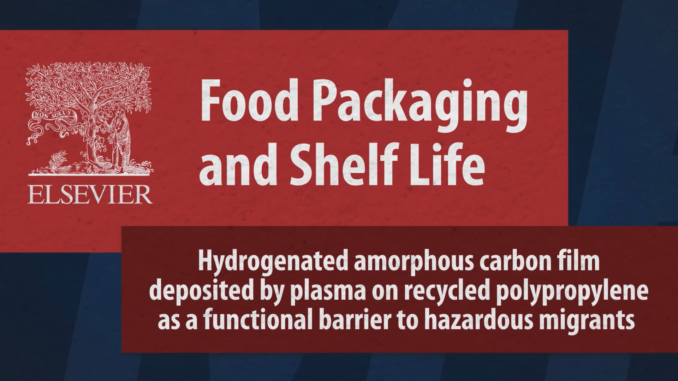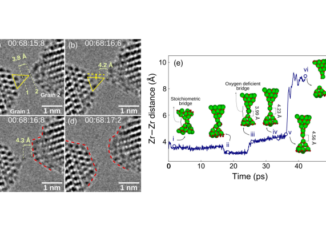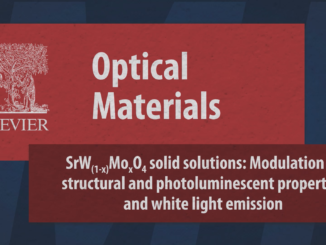
Hydrogenated amorphous carbon film deposited by plasma on recycled polypropylene as a functional barrier to hazardous migrants
Abstract: Polypropylene (PP) is one of the most used polymers, especially in single-use packaging, as well as in the healthcare industry, which causes serious environmental problems. Its correct destination is essential, and in this sense, recycling is part of the solution. However, regulatory agencies, such as the Food and Drug Administration (FDA), restrict the use of recycled plastic due to the potential migration of contaminants from packaging to food. In this way, the hydrogenated amorphous carbon (a-C:H) films deposited by plasma are an alternative to reduce the contamination. Consequently, polypropylene was subjected to the forced contamination process recommended by the FDA and submitted to a recycling process. The a-C:H films were deposited by plasma as a possible functional barrier against harmful contaminants. The developed system (recycled polymer + a-C:H film) was characterized by FTIR-ATR, XPS, Raman spectroscopy and profilometry. The efficiency of the deposition of a-C:H films on recycled PP samples was evaluated by migration tests and target analysis of the contaminants. Moreover, the presence of microdefects determined by SEM micrographs were performed before and after migration tests. These defects play an important role to modify the migration once the detachment from the surface causes an increase in the migration. For the volatile contaminants (chloroform, heptane, and toluene), in most cases, no difference was observed with contaminant migration in the samples coated with a-C:H. On the other hand, a decrease in contaminant migration was observed for benzophenone (non-volatile), in both simulants and under the three established conditions. Although, the a-C:H films still represent an attractive strategy as a barrier to the migration of contaminants.
Author(s): Paiva, R.; Wrona, M.; Nerín, C.; Cruz, S.A.
Food Packaging and Shelf Life
Published: September 2022, Volume 33, 100864
DOI: https://doi.org/10.1016/j.fpsl.2022.100864
CDMF
The CDMF, hosted at the Federal University of São Carlos (UFSCar), is one of the Research, Innovation and Dissemination Centers (RIDC) supported by the São Paulo State Research Support Foundation (Fapesp), and also receives investment from the National Council Scientific and Technological Development (CNPq), from the National Institute of Science and Technology of Materials in Nanotechnology (INCTMN).




